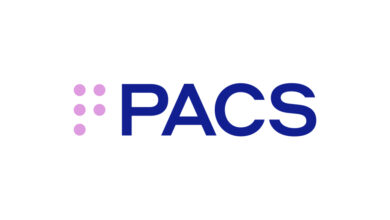Merck and Eisai Provide Update on Two Phase 3 Trials Evaluating KEYTRUDA® (pembrolizumab) Plus LENVIMA® (lenvatinib) in Patients With Certain Types of Metastatic Non-Small Cell Lung Cancer

RAHWAY, N.J. & NUTLEY, N.J.–(BUSINESS WIRE)–$MRK #MRK–Merck (NYSE: MRK), known as MSD outside of the United States and Canada, and Eisai today provided updates on two Phase 3 trials, LEAP-006 and LEAP-008, evaluating KEYTRUDA, Merck’s anti-PD-1 therapy, plus LENVIMA, the orally available multiple receptor tyrosine kinase inhibitor discovered by Eisai, in patients with certain types of metastatic non-small cell lung cancer.
LEAP-006: The Phase 3 LEAP-006 trial evaluating KEYTRUDA plus LENVIMA in combination with pemetrexed (Alimta®) and platinum-containing chemotherapy versus KEYTRUDA with pemetrexed and platinum-containing chemotherapy, a current standard of care option in this disease setting, as a first-line treatment for adult patients with metastatic, nonsquamous non-small cell lung cancer (NSCLC) who have confirmation that epidermal growth factor receptor (EGFR)-, anaplastic lymphoma kinase (ALK)- or c-ros oncogene 1 (ROS1)-directed therapies are not indicated, did not meet its dual primary endpoints of overall survival (OS) and progression free survival (PFS). At the study’s final analysis, there was not an improvement in OS for patients treated with KEYTRUDA plus LENVIMA with chemotherapy compared to KEYTRUDA with chemotherapy. Earlier interim analyses did not demonstrate a statistically significant improvement in PFS or objective response rate (ORR), a key secondary endpoint.
LEAP-008: The Phase 3 LEAP-008 trial evaluating KEYTRUDA plus LENVIMA versus docetaxel, a current second line standard of care option, as a treatment for patients with metastatic NSCLC who progressed on or after platinum-containing chemotherapy and one prior anti-PD-1/-L1 immunotherapy, and have confirmation that EGFR-, ALK- or ROS1-directed therapies are not indicated, did not meet its dual primary endpoints of OS and PFS. At the final analysis of the study, there was not an improvement in OS for patients who received KEYTRUDA plus LENVIMA compared to docetaxel. Earlier interim analyses did not demonstrate a statistically significant improvement in PFS or ORR, a key secondary endpoint.
In both the LEAP-006 and LEAP-008 trials, the safety profiles of the KEYTRUDA plus LENVIMA-based treatment regimens were consistent with that observed in previously reported studies evaluating the combination. A full evaluation of the data from these studies is ongoing. The companies will work with investigators to share the results with the scientific community.
“As a leader in lung cancer research, we continue to try to advance science for our patients by building upon the standard we set several years ago with KEYTRUDA,” said Dr. Gregory Lubiniecki, Vice President, Global Clinical Development, Merck Research Laboratories. “While these results are not what we hoped for, we are proud of the foundational role that KEYTRUDA has established in the treatment of certain types of lung cancer, and we are committed to continuing to research how we can further improve responses to our medicines for patients with difficult-to-treat forms of the disease.”
“Despite great progress in recent years, unmet needs still remain in the treatment of patients with metastatic non-small cell lung cancer, particularly for those without targetable biomarkers,” said Dr. Corina Dutcus, Senior Vice President, Global Clinical Development, Oncology at Eisai Inc. “KEYTRUDA plus LENVIMA has demonstrated survival benefit in advanced renal cell carcinoma and advanced endometrial carcinoma, and while we are disappointed that the final analyses of these non-small cell lung cancer studies did not show the same benefit, we remain committed to applying learnings from these studies and furthering research in oncology for people with unmet needs. We thank all the patients, their families and the investigators involved.”
KEYTRUDA plus LENVIMA is approved in the U.S., the EU, Japan and other countries for the treatment of advanced renal cell carcinoma (RCC) and certain types of advanced endometrial carcinoma. Lenvatinib is marketed as KISPLYX for advanced RCC in the EU. Merck and Eisai are studying the KEYTRUDA plus LENVIMA combination through the LEAP (LEnvatinib And Pembrolizumab) clinical program in various tumor types, including but not limited to endometrial carcinoma, hepatocellular carcinoma, RCC, head and neck cancer, gastric cancer and esophageal cancer across multiple clinical trials.
Results from the LEAP-006 and LEAP-008 trials do not affect the current approved indications for the KEYTRUDA plus LENVIMA combination or other ongoing trials from the LEAP clinical program.
About LEAP-006
LEAP-006 is a randomized, placebo-controlled Phase 3 trial (ClinicalTrials.gov, NCT03829319) evaluating KEYTRUDA plus LENVIMA with pemetrexed and platinum-containing chemotherapy versus KEYTRUDA plus placebo with pemetrexed and platinum- containing chemotherapy for the first-line treatment of adult patients with metastatic, nonsquamous NSCLC who have confirmation that EGFR-, ALK- or ROS1-directed therapies are not indicated. The dual primary endpoints are PFS, as assessed by blinded independent central review (BICR) per Response Evaluation Criteria in Solid Tumors version 1.1 (RESIST v1.1) modified to follow a maximum of 10 target lesions and a maximum of 5 target lesions per organ, and OS. Secondary endpoints include ORR and duration of response (DOR), as assessed by BICR per RECIST v1.1, quality of life, and safety. The study enrolled an estimated 748 patients who were randomized 1:1 to receive:
- KEYTRUDA (200 mg intravenously [IV] on Day 1 of each three-week cycle [Q3W]) plus LENVIMA (8 mg orally once daily) with pemetrexed 500 mg/m2 IV Q3W and carboplatin Area Under Curve 5 mg/mL/min (AUC5) or cisplatin 75 mg/m2 Q3W IV; or
- KEYTRUDA (200 mg IV Q3W) plus placebo (oral capsule once daily) with pemetrexed 500 mg/m2 IV Q3W and carboplatin AUC5 or cisplatin 75 mg/m2 Q3W IV.
All study drugs were continued until protocol-specified discontinuation criteria. KEYTRUDA was administered for up to 35 cycles (approximately two years). After completing two years of combination therapy, LENVIMA may have been administered as a single agent until protocol-specified discontinuation criteria were met. Carboplatin or cisplatin was administered for up to four cycles. The LEAP-006 study was conducted in collaboration with Eli Lilly and Company, the makers of Alimta® (pemetrexed).
About LEAP-008
LEAP-008 is a randomized, open-label Phase 3 trial (ClinicalTrials.gov, NCT03976375) evaluating KEYTRUDA plus LENVIMA versus docetaxel for the treatment of patients with metastatic NSCLC who progressed on or after platinum-containing chemotherapy and one prior anti-PD-1/-L1 therapy, and have confirmation that EGFR-, ALK- or ROS1-directed therapies are not indicated. The trial’s dual primary endpoints are PFS, as assessed by BICR per RECIST v1.1 modified to follow a maximum of 10 target lesions and a maximum of 5 target lesions per organ, and OS. Secondary endpoints include ORR and DOR as assessed by BICR per RECIST v1.1, quality of life and safety. The study enrolled an estimated 422 patients who were randomized 4:4:1 to receive:
- KEYTRUDA (200 mg IV every three weeks) plus LENVIMA (20 mg orally once daily); or
- Docetaxel (75 mg/m2 IV every three weeks); or
- LENVIMA (24 mg orally once daily).
KEYTRUDA was administered for up to 35 cycles (approximately two years) or until protocol-specified discontinuation criteria were met. After completing two years of combination therapy, LENVIMA may have been administered as a single agent until protocol-specified discontinuation criteria were met.
About lung cancer
Lung cancer is the leading cause of cancer death worldwide. In 2020 alone, there were more than 2.2 million new cases and 1.8 million deaths from lung cancer globally. Non-small cell lung cancer is the most common type of lung cancer in the U.S., accounting for about 81% of all cases. In the U.S., the overall five-year survival rate for patients diagnosed with lung cancer is 25%, which is a 21% improvement over the last five years. Improved survival rates are due, in part, to earlier detection and screening, reduction in smoking, advances in diagnostic and surgical procedures, as well as the introduction of new therapies. Early detection and screening remain an important unmet need, as 44% of lung cancer cases are not found until they are advanced. Only 5.8% of people in the U.S. who are eligible were screened for lung cancer in 2021.
About KEYTRUDA® (pembrolizumab) injection, 100 mg
KEYTRUDA is an anti-programmed death receptor-1 (PD-1) therapy that works by increasing the ability of the body’s immune system to help detect and fight tumor cells. KEYTRUDA is a humanized monoclonal antibody that blocks the interaction between PD-1 and its ligands, PD-L1 and PD-L2, thereby activating T lymphocytes which may affect both tumor cells and healthy cells.
Merck has the industry’s largest immuno-oncology clinical research program. There are currently more than 1,600 trials studying KEYTRUDA across a wide variety of cancers and treatment settings. The KEYTRUDA clinical program seeks to understand the role of KEYTRUDA across cancers and the factors that may predict a patient’s likelihood of benefitting from treatment with KEYTRUDA, including exploring several different biomarkers.
Selected KEYTRUDA® (pembrolizumab) Indications in the U.S.
Non-Small Cell Lung Cancer
KEYTRUDA, in combination with pemetrexed and platinum chemotherapy, is indicated for the first-line treatment of patients with metastatic nonsquamous non-small cell lung cancer (NSCLC), with no EGFR or ALK genomic tumor aberrations.
KEYTRUDA, in combination with carboplatin and either paclitaxel or paclitaxel protein-bound, is indicated for the first-line treatment of patients with metastatic squamous NSCLC.
KEYTRUDA, as a single agent, is indicated for the first-line treatment of patients with NSCLC expressing PD-L1 [tumor proportion score (TPS) ≥1%] as determined by an FDA-approved test, with no EGFR or ALK genomic tumor aberrations, and is:
- stage III where patients are not candidates for surgical resection or definitive chemoradiation, or
- metastatic.
KEYTRUDA, as a single agent, is indicated for the treatment of patients with metastatic NSCLC whose tumors express PD-L1 (TPS ≥1%) as determined by an FDA-approved test, with disease progression on or after platinum-containing chemotherapy. Patients with EGFR or ALK genomic tumor aberrations should have disease progression on FDA-approved therapy for these aberrations prior to receiving KEYTRUDA.
KEYTRUDA, as a single agent, is indicated for adjuvant treatment following resection and platinum-based chemotherapy for adult patients with stage IB (T2a ≥4 cm), II, or IIIA NSCLC.
See additional selected KEYTRUDA indications in the U.S. after the Selected Important Safety Information.
Selected Important Safety Information for KEYTRUDA
Severe and Fatal Immune-Mediated Adverse Reactions
KEYTRUDA is a monoclonal antibody that belongs to a class of drugs that bind to either the PD-1 or the PD-L1, blocking the PD-1/PD-L1 pathway, thereby removing inhibition of the immune response, potentially breaking peripheral tolerance and inducing immune-mediated adverse reactions. Immune-mediated adverse reactions, which may be severe or fatal, can occur in any organ system or tissue, can affect more than one body system simultaneously, and can occur at any time after starting treatment or after discontinuation of treatment. Important immune-mediated adverse reactions listed here may not include all possible severe and fatal immune-mediated adverse reactions.
Monitor patients closely for symptoms and signs that may be clinical manifestations of underlying immune-mediated adverse reactions. Early identification and management are essential to ensure safe use of anti–PD-1/PD-L1 treatments. Evaluate liver enzymes, creatinine, and thyroid function at baseline and periodically during treatment. For patients with TNBC treated with KEYTRUDA in the neoadjuvant setting, monitor blood cortisol at baseline, prior to surgery, and as clinically indicated. In cases of suspected immune-mediated adverse reactions, initiate appropriate workup to exclude alternative etiologies, including infection. Institute medical management promptly, including specialty consultation as appropriate.
Withhold or permanently discontinue KEYTRUDA depending on severity of the immune-mediated adverse reaction. In general, if KEYTRUDA requires interruption or discontinuation, administer systemic corticosteroid therapy (1 to 2 mg/kg/day prednisone or equivalent) until improvement to Grade 1 or less. Upon improvement to Grade 1 or less, initiate corticosteroid taper and continue to taper over at least 1 month. Consider administration of other systemic immunosuppressants in patients whose adverse reactions are not controlled with corticosteroid therapy.
Immune-Mediated Pneumonitis
KEYTRUDA can cause immune-mediated pneumonitis. The incidence is higher in patients who have received prior thoracic radiation. Immune-mediated pneumonitis occurred in 3.4% (94/2799) of patients receiving KEYTRUDA, including fatal (0.1%), Grade 4 (0.3%), Grade 3 (0.9%), and Grade 2 (1.3%) reactions. Systemic corticosteroids were required in 67% (63/94) of patients. Pneumonitis led to permanent discontinuation of KEYTRUDA in 1.3% (36) and withholding in 0.9% (26) of patients. All patients who were withheld reinitiated KEYTRUDA after symptom improvement; of these, 23% had recurrence. Pneumonitis resolved in 59% of the 94 patients.
Pneumonitis occurred in 8% (31/389) of adult patients with cHL receiving KEYTRUDA as a single agent, including Grades 3-4 in 2.3% of patients. Patients received high-dose corticosteroids for a median duration of 10 days (range: 2 days to 53 months). Pneumonitis rates were similar in patients with and without prior thoracic radiation. Pneumonitis led to discontinuation of KEYTRUDA in 5.4% (21) of patients. Of the patients who developed pneumonitis, 42% interrupted KEYTRUDA, 68% discontinued KEYTRUDA, and 77% had resolution.
Pneumonitis occurred in 7% (41/580) of adult patients with resected NSCLC who received KEYTRUDA as a single agent for adjuvant treatment of NSCLC, including fatal (0.2%), Grade 4 (0.3%), and Grade 3 (1%) adverse reactions. Patients received high-dose corticosteroids for a median duration of 10 days (range: 1 day to 2.3 months). Pneumonitis led to discontinuation of KEYTRUDA in 26 (4.5%) of patients. Of the patients who developed pneumonitis, 54% interrupted KEYTRUDA, 63% discontinued KEYTRUDA, and 71% had resolution.
Immune-Mediated Colitis
KEYTRUDA can cause immune-mediated colitis, which may present with diarrhea. Cytomegalovirus infection/reactivation has been reported in patients with corticosteroid-refractory immune-mediated colitis. In cases of corticosteroid-refractory colitis, consider repeating infectious workup to exclude alternative etiologies. Immune-mediated colitis occurred in 1.7% (48/2799) of patients receiving KEYTRUDA, including Grade 4 (<0.1%), Grade 3 (1.1%), and Grade 2 (0.4%) reactions. Systemic corticosteroids were required in 69% (33/48); additional immunosuppressant therapy was required in 4.2% of patients. Colitis led to permanent discontinuation of KEYTRUDA in 0.5% (15) and withholding in 0.5% (13) of patients. All patients who were withheld reinitiated KEYTRUDA after symptom improvement; of these, 23% had recurrence. Colitis resolved in 85% of the 48 patients.
Hepatotoxicity and Immune-Mediated Hepatitis
KEYTRUDA as a Single Agent
KEYTRUDA can cause immune-mediated hepatitis. Immune-mediated hepatitis occurred in 0.7% (19/2799) of patients receiving KEYTRUDA, including Grade 4 (<0.1%), Grade 3 (0.4%), and Grade 2 (0.1%) reactions. Systemic corticosteroids were required in 68% (13/19) of patients; additional immunosuppressant therapy was required in 11% of patients. Hepatitis led to permanent discontinuation of KEYTRUDA in 0.2% (6) and withholding in 0.3% (9) of patients. All patients who were withheld reinitiated KEYTRUDA after symptom improvement; of these, none had recurrence. Hepatitis resolved in 79% of the 19 patients.
KEYTRUDA With Axitinib
KEYTRUDA in combination with axitinib can cause hepatic toxicity. Monitor liver enzymes before initiation of and periodically throughout treatment. Consider monitoring more frequently as compared to when the drugs are administered as single agents. For elevated liver enzymes, interrupt KEYTRUDA and axitinib, and consider administering corticosteroids as needed. With the combination of KEYTRUDA and axitinib, Grades 3 and 4 increased alanine aminotransferase (ALT) (20%) and increased aspartate aminotransferase (AST) (13%) were seen at a higher frequency compared to KEYTRUDA alone. Fifty-nine percent of the patients with increased ALT received systemic corticosteroids. In patients with ALT ≥3 times upper limit of normal (ULN) (Grades 2-4, n=116), ALT resolved to Grades 0-1 in 94%. Among the 92 patients who were rechallenged with either KEYTRUDA (n=3) or axitinib (n=34) administered as a single agent or with both (n=55), recurrence of ALT ≥3 times ULN was observed in 1 patient receiving KEYTRUDA, 16 patients receiving axitinib, and 24 patients receiving both. All patients with a recurrence of ALT ≥3 ULN subsequently recovered from the event.
Immune-Mediated Endocrinopathies
Adrenal Insufficiency
KEYTRUDA can cause primary or secondary adrenal insufficiency. For Grade 2 or higher, initiate symptomatic treatment, including hormone replacement as clinically indicated. Withhold KEYTRUDA depending on severity. Adrenal insufficiency occurred in 0.8% (22/2799) of patients receiving KEYTRUDA, including Grade 4 (<0.1%), Grade 3 (0.3%), and Grade 2 (0.3%) reactions. Systemic corticosteroids were required in 77% (17/22) of patients; of these, the majority remained on systemic corticosteroids. Adrenal insufficiency led to permanent discontinuation of KEYTRUDA in <0.1% (1) and withholding in 0.3% (8) of patients. All patients who were withheld reinitiated KEYTRUDA after symptom improvement.
Hypophysitis
KEYTRUDA can cause immune-mediated hypophysitis. Hypophysitis can present with acute symptoms associated with mass effect such as headache, photophobia, or visual field defects. Hypophysitis can cause hypopituitarism. Initiate hormone replacement as indicated. Withhold or permanently discontinue KEYTRUDA depending on severity. Hypophysitis occurred in 0.6% (17/2799) of patients receiving KEYTRUDA, including Grade 4 (<0.1%), Grade 3 (0.3%), and Grade 2 (0.2%) reactions. Systemic corticosteroids were required in 94% (16/17) of patients; of these, the majority remained on systemic corticosteroids. Hypophysitis led to permanent discontinuation of KEYTRUDA in 0.1% (4) and withholding in 0.3% (7) of patients. All patients who were withheld reinitiated KEYTRUDA after symptom improvement.
Thyroid Disorders
KEYTRUDA can cause immune-mediated thyroid disorders. Thyroiditis can present with or without endocrinopathy. Hypothyroidism can follow hyperthyroidism. Initiate hormone replacement for hypothyroidism or institute medical management of hyperthyroidism as clinically indicated. Withhold or permanently discontinue KEYTRUDA depending on severity. Thyroiditis occurred in 0.6% (16/2799) of patients receiving KEYTRUDA, including Grade 2 (0.3%). None discontinued, but KEYTRUDA was withheld in <0.1% (1) of patients.
Hyperthyroidism occurred in 3.4% (96/2799) of patients receiving KEYTRUDA, including Grade 3 (0.1%) and Grade 2 (0.8%). It led to permanent discontinuation of KEYTRUDA in <0.1% (2) and withholding in 0.3% (7) of patients. All patients who were withheld reinitiated KEYTRUDA after symptom improvement. Hypothyroidism occurred in 8% (237/2799) of patients receiving KEYTRUDA, including Grade 3 (0.1%) and Grade 2 (6.2%). It led to permanent discontinuation of KEYTRUDA in <0.1% (1) and withholding in 0.5% (14) of patients. All patients who were withheld reinitiated KEYTRUDA after symptom improvement. The majority of patients with hypothyroidism required long-term thyroid hormone replacement. The incidence of new or worsening hypothyroidism was higher in 1185 patients with HNSCC, occurring in 16% of patients receiving KEYTRUDA as a single agent or in combination with platinum and FU, including Grade 3 (0.3%) hypothyroidism. The incidence of new or worsening hypothyroidism was higher in 389 adult patients with cHL (17%) receiving KEYTRUDA as a single agent, including Grade 1 (6.2%) and Grade 2 (10.8%) hypothyroidism. The incidence of new or worsening hyperthyroidism was higher in 580 patients with resected NSCLC, occurring in 11% of patients receiving KEYTRUDA as a single agent as adjuvant treatment, including Grade 3 (0.2%) hyperthyroidism. The incidence of new or worsening hypothyroidism was higher in 580 patients with resected NSCLC, occurring in 22% of patients receiving KEYTRUDA as a single agent as adjuvant treatment (KEYNOTE-091), including Grade 3 (0.3%) hypothyroidism.
Type 1 Diabetes Mellitus (DM), Which Can Present With Diabetic Ketoacidosis
Monitor patients for hyperglycemia or other signs and symptoms of diabetes. Initiate treatment with insulin as clinically indicated. Withhold KEYTRUDA depending on severity. Type 1 DM occurred in 0.2% (6/2799) of patients receiving KEYTRUDA. It led to permanent discontinuation in <0.1% (1) and withholding of KEYTRUDA in <0.1% (1) of patients. All patients who were withheld reinitiated KEYTRUDA after symptom improvement.
Immune-Mediated Nephritis With Renal Dysfunction
KEYTRUDA can cause immune-mediated nephritis. Immune-mediated nephritis occurred in 0.3% (9/2799) of patients receiving KEYTRUDA, including Grade 4 (<0.1%), Grade 3 (0.1%), and Grade 2 (0.1%) reactions. Systemic corticosteroids were required in 89% (8/9) of patients. Nephritis led to permanent discontinuation of KEYTRUDA in 0.1% (3) and withholding in 0.1% (3) of patients. All patients who were withheld reinitiated KEYTRUDA after symptom improvement; of these, none had recurrence. Nephritis resolved in 56% of the 9 patients.
Immune-Mediated Dermatologic Adverse Reactions
KEYTRUDA can cause immune-mediated rash or dermatitis. Exfoliative dermatitis, including Stevens-Johnson syndrome, drug rash with eosinophilia and systemic symptoms, and toxic epidermal necrolysis, has occurred with anti–PD-1/PD-L1 treatments. Topical emollients and/or topical corticosteroids may be adequate to treat mild to moderate nonexfoliative rashes. Withhold or permanently discontinue KEYTRUDA depending on severity. Immune-mediated dermatologic adverse reactions occurred in 1.4% (38/2799) of patients receiving KEYTRUDA, including Grade 3 (1%) and Grade 2 (0.1%) reactions. Systemic corticosteroids were required in 40% (15/38) of patients. These reactions led to permanent discontinuation in 0.1% (2) and withholding of KEYTRUDA in 0.6% (16) of patients. All patients who were withheld reinitiated KEYTRUDA after symptom improvement; of these, 6% had recurrence. The reactions resolved in 79% of the 38 patients.
Other Immune-Mediated Adverse Reactions
The following clinically significant immune-mediated adverse reactions occurred at an incidence of <1% (unless otherwise noted) in patients who received KEYTRUDA or were reported with the use of other anti–PD-1/PD-L1 treatments.
Contacts
Media Contacts:
Merck:
Julie Cunningham
(617) 519-6264
John Infanti
(609) 500-4714
Eisai:
Michele Randazzo
(551) 427-6722
Investor Contacts:
Merck:
Peter Dannenbaum
(732) 594-1579
Damini Chokshi
(732) 594-1577





